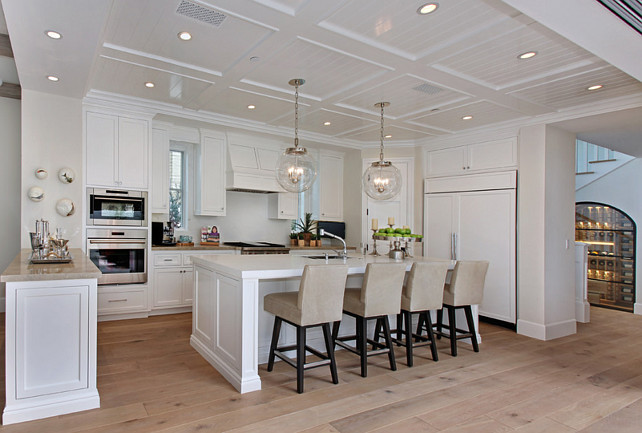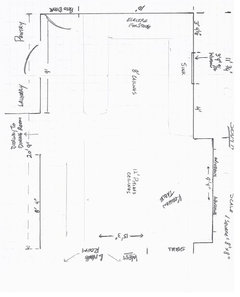
You won't be able to stand at the sink (or anyone else for that matter) and load the DW or use the oven.

Yes, we're a relatively tall family, but even my 5'6" mother wouldn't be able to easily use one!Īs a second oven that you won't use that much, you might be able to get away with it, but I wouldn't do it - especially, as I've said, you are losing a lot of cabinet space for an appliance that you may or may not use that often.Īs previously mentioned, the arrangement of your appliances in your layout will not work. We saw one installed and immediately nixed the idea. I know, some people have done it and claim the very low height isn't an issue, but all I can say is that they must be pretty short or. Wall ovens really should not be installed under the counter - they are much lower to the floor than ovens in a range and will be more difficult to use. Trying to fit all the gadgets you want is going to be difficult - the large range, additional wall oven, pantry, and seating, in particular.Įven if they can all be crammed into your space, you will have a serious lack of storage space that even a pantry won't be able to compensate for - unless it's a very large walk-in pantry - and you don't have room for such a pantry, at least not that you've shown us so far. You have a small Kitchen - especially considering the doors/doorways & windows. While we're waiting to hear from you, a few comments. How do I ask for Layout Help and what information should I include?
12X16 KITCHEN LAYOUT PLUS
Have you had a chance to read the "Layout Help" FAQ? It discusses the information we need to help you find the best layout for you and your family (including the questions above - plus others.) If it is 36", do you really need that big a range? If so, then have you considered a 36" range with two ovens instead of a 36" range + wall oven? Is that a 30" or 36" range? It looks like 36".

What are the dimensions of the current dining space?Ĭould you please post a full-floor sketch so we can see all the rooms on the floor? This helps us see how the other rooms relate to the Kitchen and how traffic flows in, around, and through the Kitchen. Is the "Kitchen Dining Room" your only table space? What is your family composition and how do you see yourself using the new Kitchen? Where are you flexible? Are you willing to move/change the windows? Other walls/doors/doorways? However, I think I've figured them all out within an inch or so now.

Plus, there are a few key measurements missing (e.g., the width of the existing DR 's important b/c you did not provide accurate overall measurements). X Expert Source Art FrickeJust so you know, your measurement labels are a bit unusual in that they don't measure the same way consistently. Keep in mind that if your grout lines are very small, like 1⁄ 16 in (0.16 cm), it will look more obvious if your tiles aren't perfectly uniform.Home Renovation & Repair Specialist Expert Interview. For grout lines that are exactly 1⁄ 8 in (0.32 cm), you can choose either sanded or unsanded, but sanded might be best for areas that will need to be scrubbed frequently, since it's more durable. For grout lines larger than 1⁄ 8 in (0.32 cm), it's better to use sanded grout, as the added sand will reinforce the grout. If you're planning to have grout lines that are smaller than 1⁄ 8 in (0.32 cm), consider using unsanded grout, as it will get down into the lines more easily.The amount of space you leave between tiles will depend on the look you’re trying to achieve, but 1⁄ 8 in (0.32 cm) spacers are standard for most flooring projects.

Tile spacers come in many different sizes.Spacers also serve to show the minimum distance you'll need to leave between each tile for your grout lines. The spacers will ensure that your layout remains neat and even and that no 2 tiles are set too close together. After you lay down a tile, place a tile spacer at either end before putting down the next tile in the row.


 0 kommentar(er)
0 kommentar(er)
